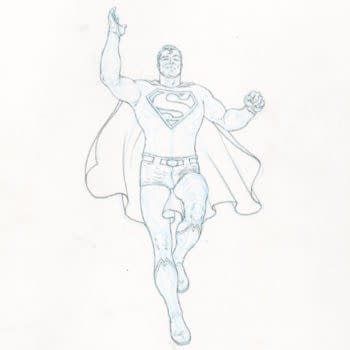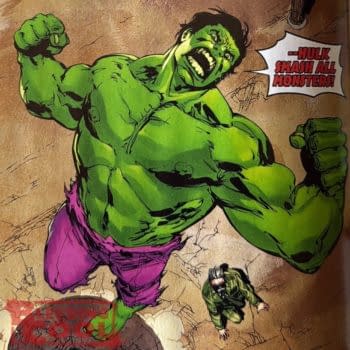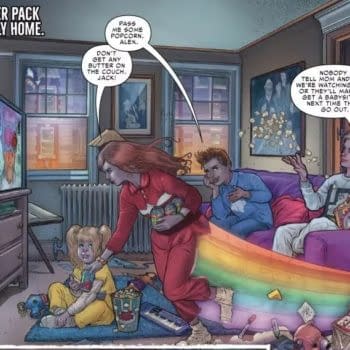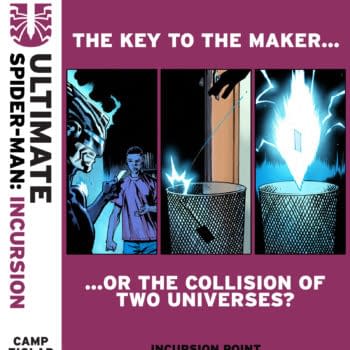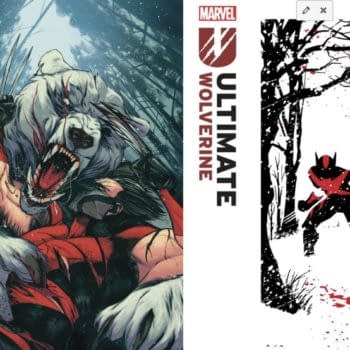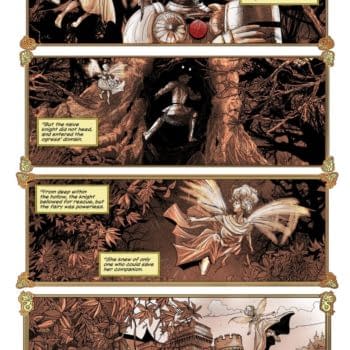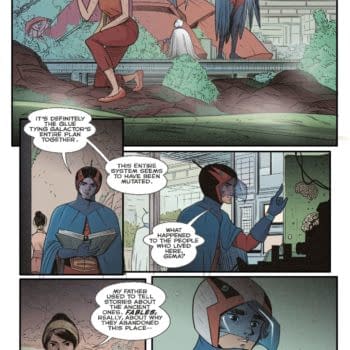Posted in: Comics | Tagged: 2009, Alan Moore, centiry, Comics, gosh, harry potter, Kevin O'Neill, league of extraordinary gentlemen, Review, Watchmen
League Of Extraordinary Gentlemen: Century 2009: The Bleeding Cool Review
This article contains minor spoilers, but nothing that I believe spoils the comic book reading experience.
It would be easy to be fooled by the Independent Of Sunday's headline. This comic contains, after all, a plot that has been set up across the decades by the previous books, 1910 and 1969. But The League Of Extraordinary Gentlemen Century 2009 is so much more… and for those who feel media coverage has spoiled this book at all, I disagree completely. I'd read everything, yet going in I found acres of surprise – and an amazing, wonderful and awe inspiring finale. Which I am most definitely not going to spoil for you. Merely to say, I don't know if the phrase "deus ex machina" has ever been used quite so accurately.
This book, like the previous two chapters, is spotlighted by song, and a reworking of the The Threepenny Opera, this time rewritten and performed in a dank basement dive in Soho, London, by some punkish diva, that works as both exposition, narrative and foreshadowing. We also have the story of Oliver Haddo, occultist who, through the decades, has moved from body to body, preparing for the birth of the Moonchild, the Anti-Christ and the end of the world. Somewhere between the end of chapter two and the beginning of chapter three, the child was born. And now it is time to do something about it.
It harks back, quite deliberately to the very first volume of The League – then we had Mina under the orders of Campion Bond, himself ordered by "M" to gather up the flotsam and jetsam of fictional freaks into the League Of Extraordinary Gentlemen. Now we have Orlando, hailing from a far earlier League from the 17th century, following the orders of Prospero, to gather up the league again, to prevent the impending apocalypse, this time aided by the new M. And while you might not guess who M is, straight away, you won't be surprised by the new look. An actual plot then, a mission, a traditional trope to be followed and acted out, the day to be saved.
We are also in a world that the three main characters now despise. All the promises of the past have failed, Mina even finds much of the lifestyle to be Victorian in nature – but of course, this is League, so it's not just a comment on the haves and have nots, but also a judgment on culture and media, the barren modern landscape lacking in inspiration, vitality or life. Which is where our anti-Christ comes in, literally and figuratively pissing on the past, destroying it.
Orlando finds Mina in the very same place Mina found Griffin, though using very different way of being invisible. And Alan Quartermain is found in a very modern equivalent of the place he was also found a hundred and fifty years ago. And the weapon of choice is found in possibly the funniest place it could be. Because which this is a depressing world, there is still joy to be found if you know where to look for it. And then it's time for the big fight scene. Which looks crazy, angular, full of power and destruction in the suburban streets of Britain's New Towns.
It is impossible to read this book without playing spot-the-reference, I find it as much a joy or a puzzle as the rest of the book. The wit and skill is as impressive as ever. From an ad for Aquaman 2 (the sequel to the fictitious film in Entourage), to the many Jimmy Bonds to the crew of 24 being drafted in to solve problems from the West Wing, it's an entertaining endeavour that enriches rather than distracts from the reading experience. Footnotes embedded into the images themselves, it's a particularly unique comic book trick, the graphic immediacy of film combined with the considered reader-controlled speed, here used to the maximum, allowing the reader to make the choice of how they experience the story. It is, to all intents and purposes an all signing and dancing multi media comic, that just happens to be printed on paper.
The world in which the book lives, is also impressively rendered, rather than the Victorian bill stickers of previous volumes, indicating the cast and crew of the comic, we have first a series of banner ads, and the revelation that in the League world, we addresses end with .tom rather than .com (a reference to Tim Berners Lee?) and we are also presented with a Kickstarter-esque page called KreditKrunch in which Moore and O'Neill offer a series of increasingly desperate pleas for cash. And the prose story at the end, a continuing whirlwind through worlds within worlds, dovetails into this final chapter in a devastatingly poignant fashion.
On the legal front, trademarks are carefully never infringed, expertly avoided in one case by the use of first person perspective. Which also helps portray the whole experience as a wand-based game of Halo, a Harry Potter video game, a rather wonderful side effect that condemns the franchise as nothing more than a shoot-em-up, lacking in literary depth, yet embraced by all as if that doesn't matter. Which suddenly makes me reinterpret the opening scene with Orlando talking about his/her recent Middle East war experience… is he/she also playing a game? It begins with war and death, and so does it end.
And this is parody. Satire. The idea of turning narratives into cash-grabbing franchises across media, the destruction it can cause, and the paucity of the husks it leaves behind.
But that in the end, all that can be changed by the power of a good story. They just seem to be harder to find these days.
Some people have felt disappointed by the divergences that recent League books have travelled. I understand that point, even as I disagree with it. But they should find a lot more to love with this chapter.
I think I'm going to go and read it again.
The big signing is this Saturday at Gosh Comics on Berwick Street, as well as the release of the Black Dossier vinyl record, only available, in person, at that store along with the newly UK-redistributed Black Dossier. Gosh Comics, in its 2009 location, also makes an appearance opposite where the British Museum is in our work. It is also a favourite shop of the sitcom writer Graham Linehan, celebrated by Father Jack epithets Drink! Feck! Girls! as he is ejected from the premises…











